Neuroscience
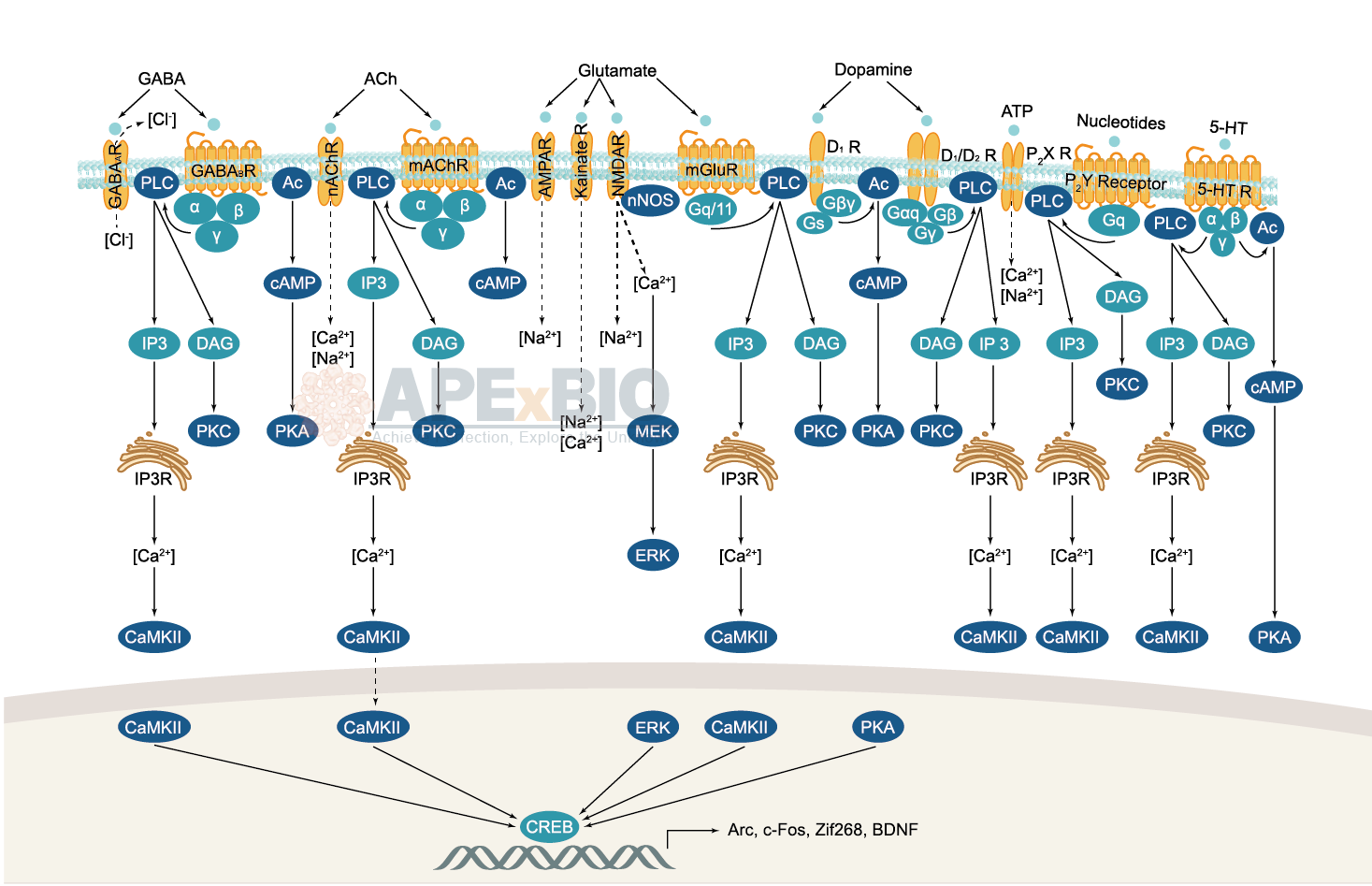
Neurotransmitter receptors function via various G-protein coupled and G-protein independent mechanisms that activate downstream intracellular signaling pathways such as cAMP/PKA, PI3K/AKT, phospholipase A2, and phospholipase C pathways. For instance, dopamine receptors act through adenylate cyclase to activate PKA and other signaling molecules, thereby mediate gene expression through the actions of CREB and other transcription factors. Other neurotransmitters such as NMDAR or AMPAR are associated with ion channels that control flux of Ca2+ and Na+, thus propagating the action potential across the post-synaptic neuron.
Dysfunctions in GABAergic/glutamatergic/serotonergic/dopaminergic pathways result in a broad range of neurological disorders such as chronic pain, neurodegenerative diseases, and insomnia, as well as mental disorders including schizophrenia, bipolar disorder, depression, and addiction.
-
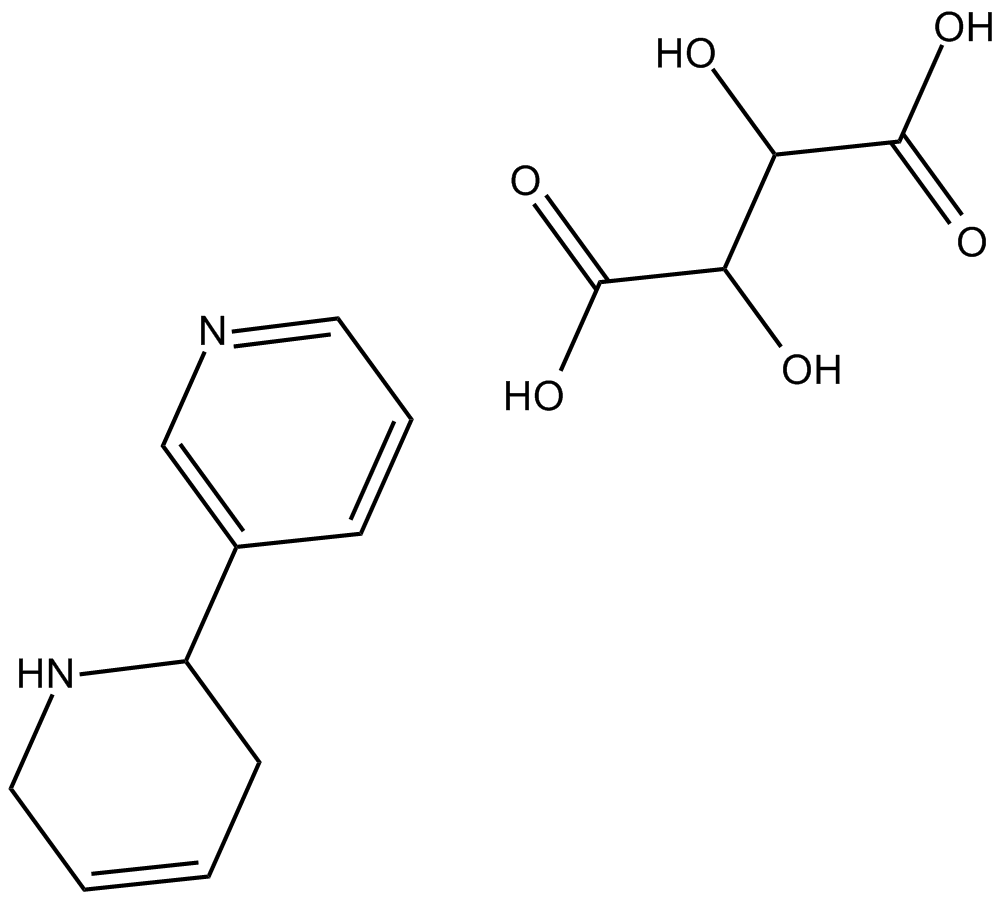 C4888 (R,S)-Anatabine (tartrate)Summary: Aβ inhibitor
C4888 (R,S)-Anatabine (tartrate)Summary: Aβ inhibitor -
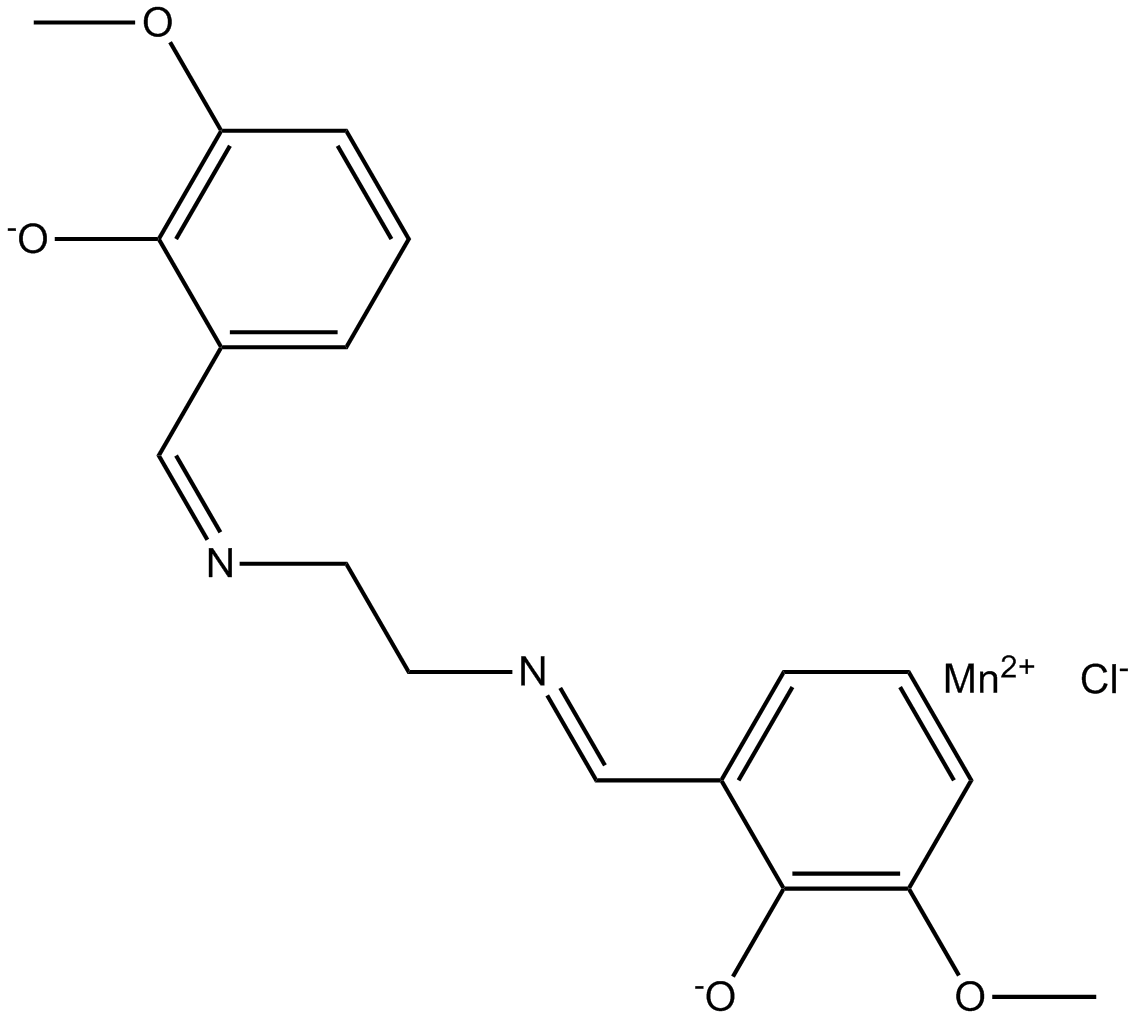 B1325 EUK 134Summary: Salen-manganese complexes;SOD mimetic
B1325 EUK 134Summary: Salen-manganese complexes;SOD mimetic -
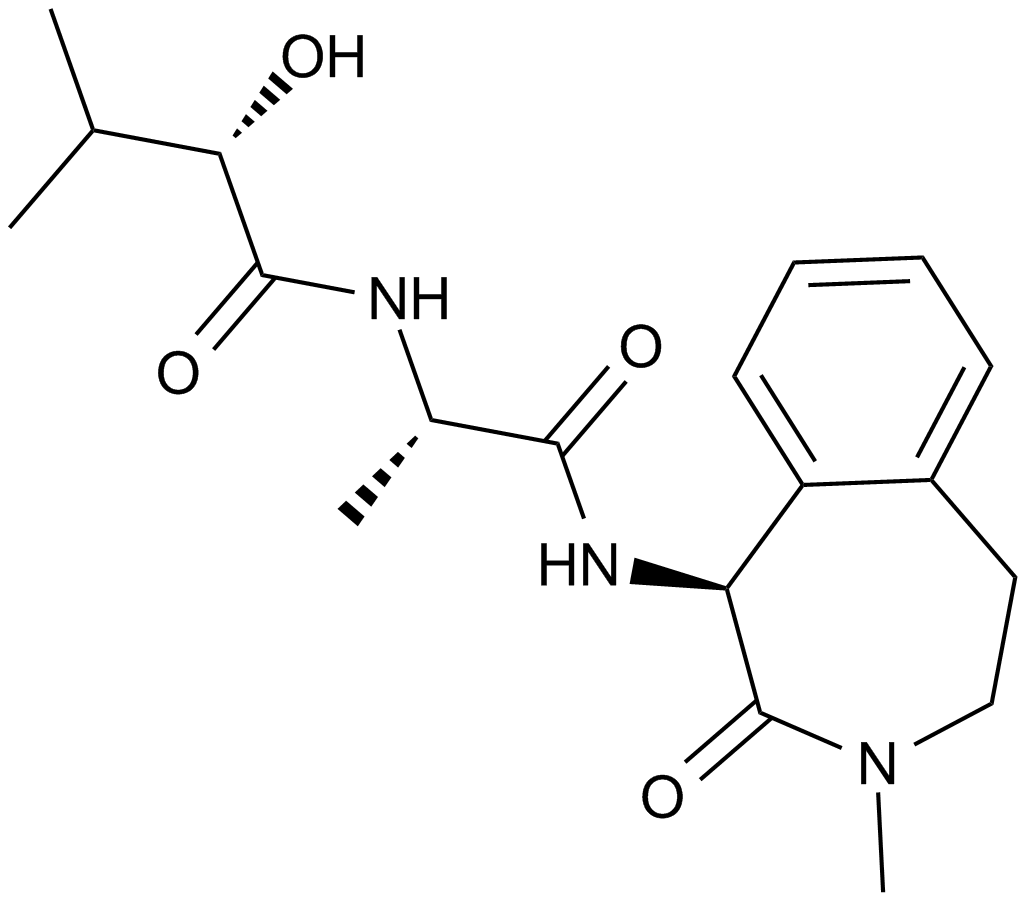 A8190 Semagacestat (LY450139)Summary: γ-secretase inhibitor
A8190 Semagacestat (LY450139)Summary: γ-secretase inhibitor -
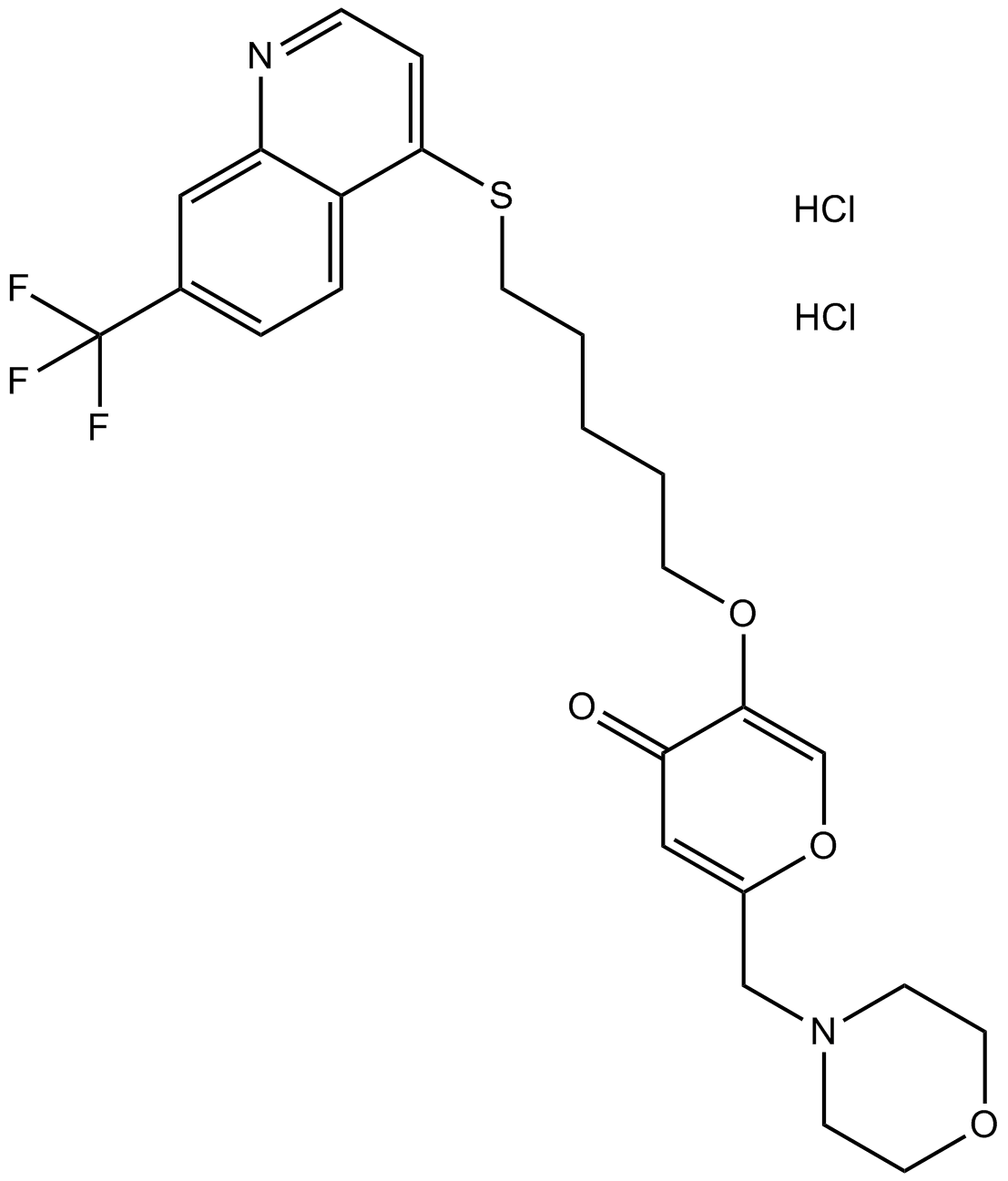 B5487 EHT 1864Summary: Rac family small GTPases inhibitor
B5487 EHT 1864Summary: Rac family small GTPases inhibitor -
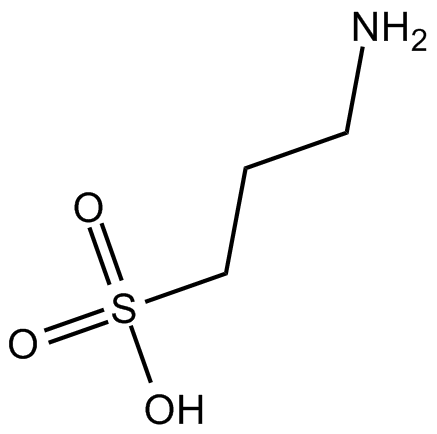 B7446 TramiprosateSummary: maintains Aβ in a non-fibrillar form.
B7446 TramiprosateSummary: maintains Aβ in a non-fibrillar form. -
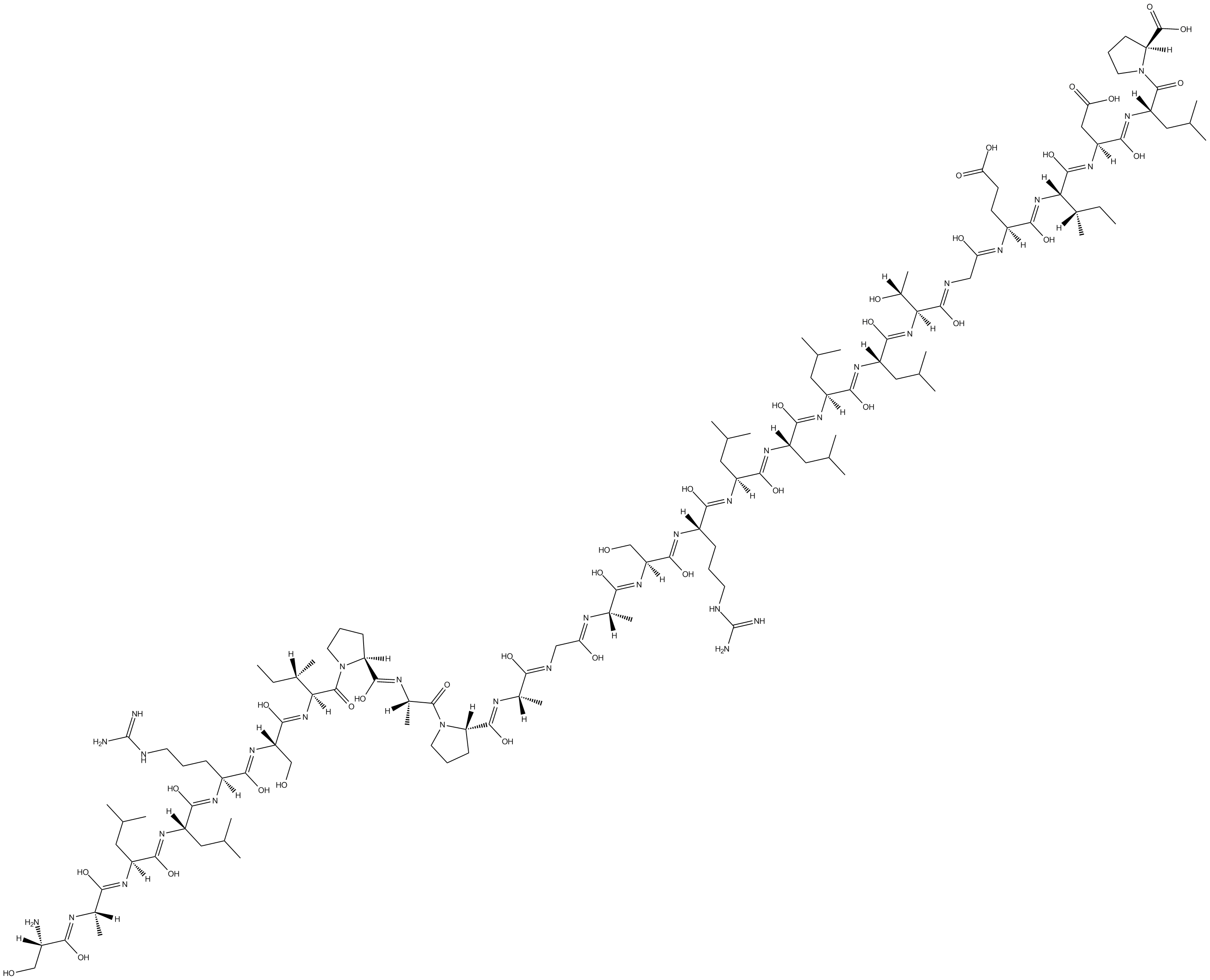 B7546 ColivelinTarget: STATSummary: A neuroprotective peptide and activator of STAT3
B7546 ColivelinTarget: STATSummary: A neuroprotective peptide and activator of STAT3 -
 B5526 LPYFD-NH2Summary: neuroprotective peptide that binds to amyloid beta (Aβ)
B5526 LPYFD-NH2Summary: neuroprotective peptide that binds to amyloid beta (Aβ) -
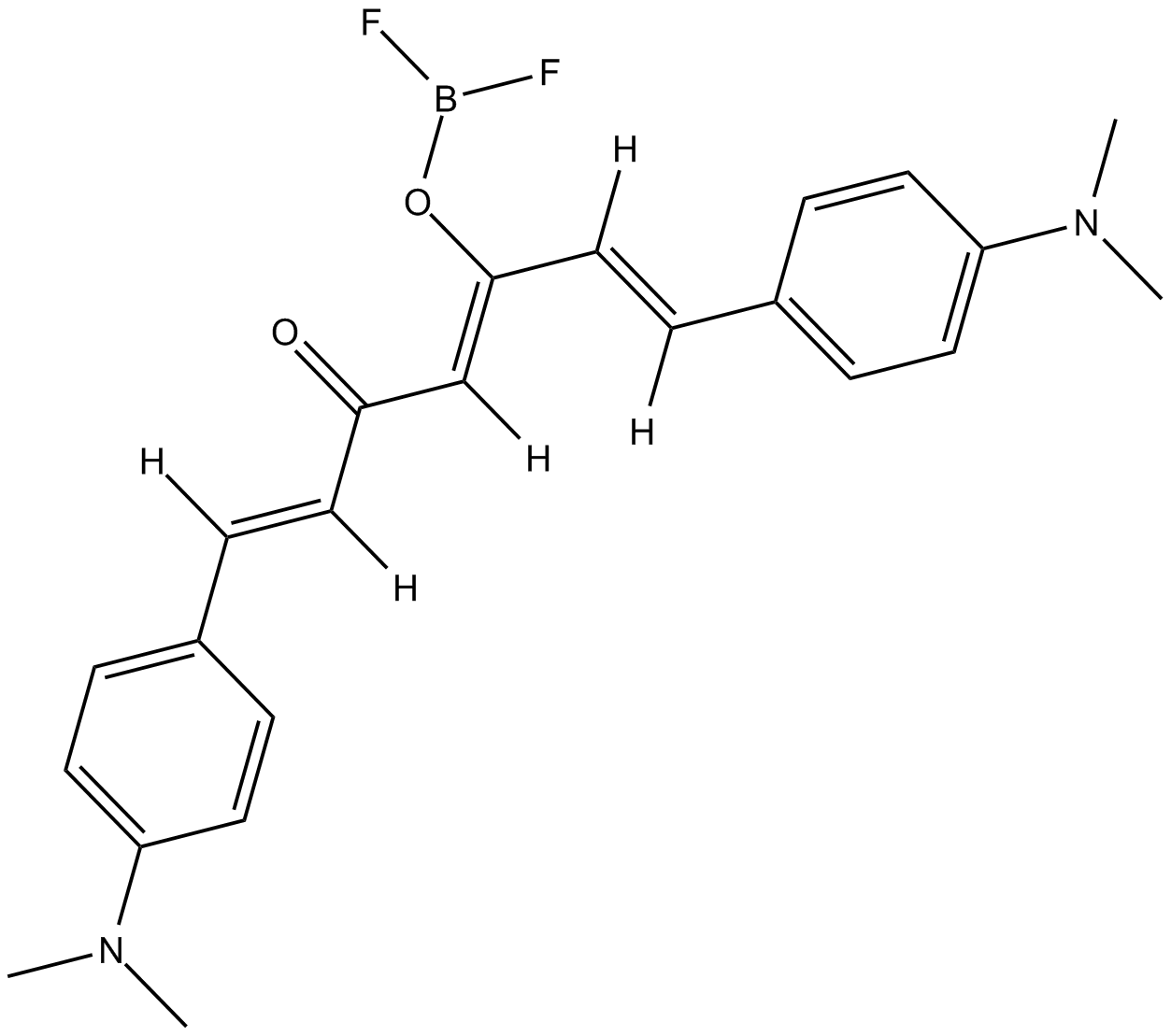 B5719 CRANAD 2Summary: near-infrared probe that binds to Aβ40 aggregates
B5719 CRANAD 2Summary: near-infrared probe that binds to Aβ40 aggregates -
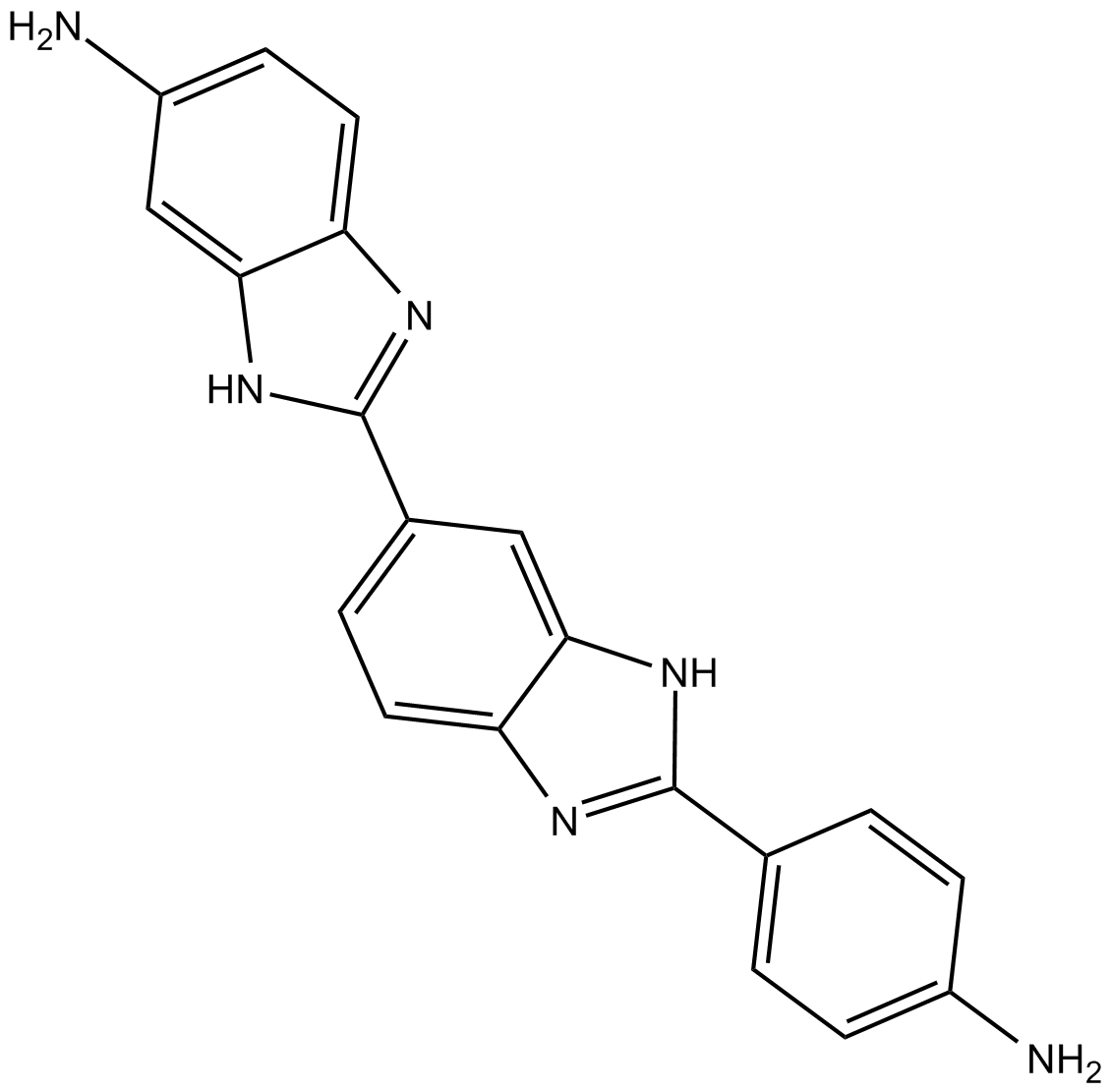 B7043 Ro 90-7501Summary: Inhibitor of amyloid β42 (Aβ42) fibril assembly
B7043 Ro 90-7501Summary: Inhibitor of amyloid β42 (Aβ42) fibril assembly -
![amyloid A protein fragment [Homo sapiens]](/pub/media/prod_images/a/1/a1053.png) A1053 amyloid A protein fragment [Homo sapiens]Summary: Apolipoproteins related to HDL in plasma
A1053 amyloid A protein fragment [Homo sapiens]Summary: Apolipoproteins related to HDL in plasma

